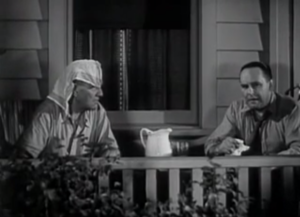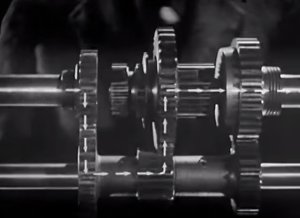 While it’s almost cliché to say they don’t make things like they used to, this week’s Retrotechtacular offers fairly conclusive proof that, at the very least, they used to put more time and effort into manufacturing consumer electronics. Gather your homemade wisecrackin’ robots and settle in front of this 1959 film entitled “The Reasons Why”, a rah-rah film created for new employees of the RCA Victor television division.
While it’s almost cliché to say they don’t make things like they used to, this week’s Retrotechtacular offers fairly conclusive proof that, at the very least, they used to put more time and effort into manufacturing consumer electronics. Gather your homemade wisecrackin’ robots and settle in front of this 1959 film entitled “The Reasons Why”, a rah-rah film created for new employees of the RCA Victor television division.
It may open with a jingle, but things quickly turn serious. Quality is no laughing matter for the men and women devoted to bringing you the best television set for your money. This type of unmatched excellence begins with tireless R&D into improving sound and picture quality. Every transformer is tested at five times the rated voltage, and every capacitor at two times the rating. Every switch undergoes a series of mechanical tests, including a pressured steam bath to ensure they will hold up even if you drag your set out to the porch some unbearably hot deep South August night.

Cabinet design is just as important—what’s the use in housing a chassis and kinescope that’ll last for 60 years in some cheap box? Woods from all over the world are carefully considered for their beauty and durability. A television set is, after all, the centerpiece of the American family room furniture group. These carefully selected woods are baked in a series of ovens to prove they’ll stand up to hours of continuous use.
Continue reading “Retrotechtacular: Designing And Building RCA Televisions”

 Simple machines are wonderful in their own right and serve as the cornerstones of many technological advances. This is certainly true for the humble lever and the role it plays in manual transmissions as evidenced in this week’s Retrotechtacular installment,
Simple machines are wonderful in their own right and serve as the cornerstones of many technological advances. This is certainly true for the humble lever and the role it plays in manual transmissions as evidenced in this week’s Retrotechtacular installment,  Next, we are shown how engine power is transferred to the rear wheels: it travels from a gear on the engine shaft to a gear on the drive shaft through gears on the countershaft. At low speeds, we let the smallest gear on the countershaft turn the largest gear on the drive shaft. When the engine is turning 90 RPM, the rear wheel turns at 30 RPM. At high speeds using high gears, the power goes directly from the engine shaft to the drive shaft and the RPM on both is equal. The film goes on to explain how the gearbox handles reverse, and the vast improvements to transmission life made possible through synchromesh gearing.
Next, we are shown how engine power is transferred to the rear wheels: it travels from a gear on the engine shaft to a gear on the drive shaft through gears on the countershaft. At low speeds, we let the smallest gear on the countershaft turn the largest gear on the drive shaft. When the engine is turning 90 RPM, the rear wheel turns at 30 RPM. At high speeds using high gears, the power goes directly from the engine shaft to the drive shaft and the RPM on both is equal. The film goes on to explain how the gearbox handles reverse, and the vast improvements to transmission life made possible through synchromesh gearing.








